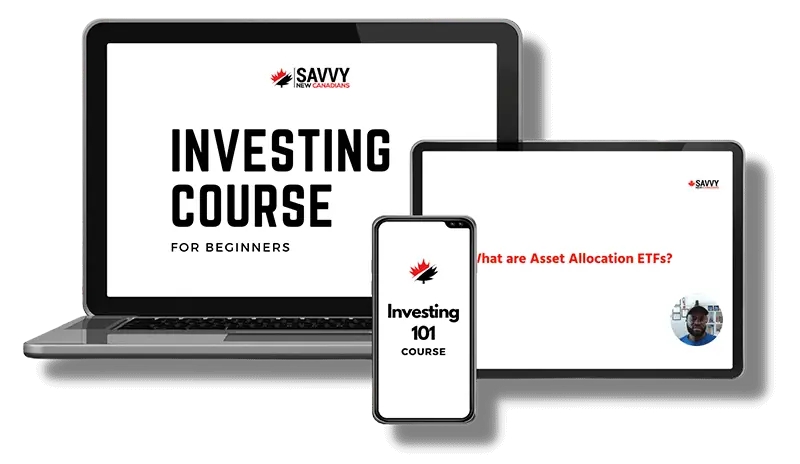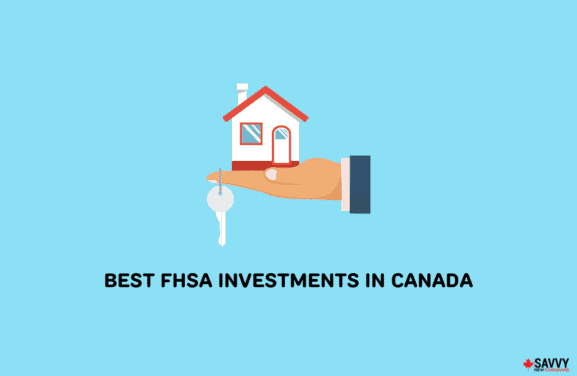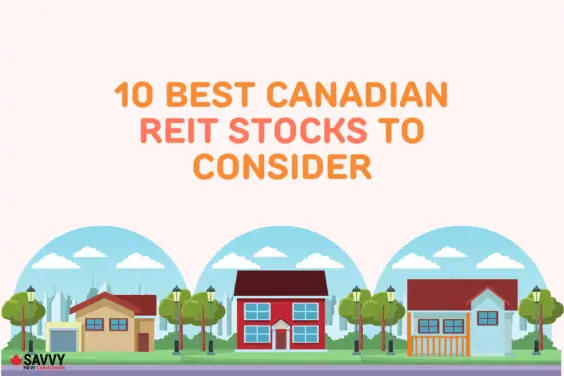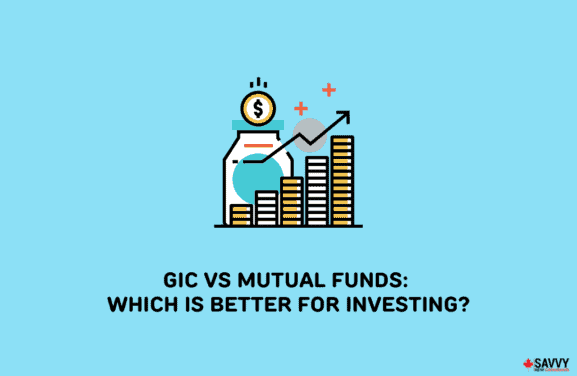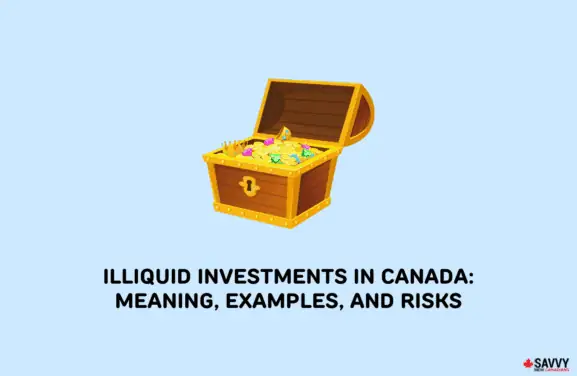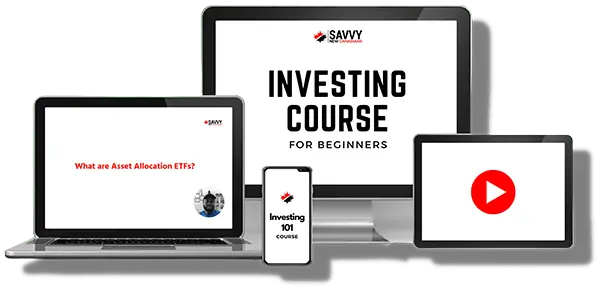Deciding that you want to start investing is one of the best things you can do to help yourself and your loved ones in the future. But what exactly does it mean to be an investor?
Investing money in Canada for beginners can be a daunting task. There are so many different investment assets that you might feel overwhelmed at first. To address this, we have put together this guide for new Canadian investors!
Investing involves allocating your money to different assets with the expectation of growing that money in the future. Investors should always know that all investments come with an inherent level of risk, but there certainly are some safer investment strategies than others.
According to a Finder.com research survey, 48% of Canadians have some sort of investment in the stock market to earn income.
Part of this is the ease of accessibility to the Canadian and US stock markets. The Canadian government also provides investment-based accounts like the RRSP or TFSA, which makes investing in assets easier for Canadians.
As a beginner, investing in safer assets like low-cost ETFs and index funds is an excellent way to build the foundation of your portfolio.
When you become more comfortable with the markets, there are both short-term and long-term investing strategies you can incorporate. This can include trading options or day trading for the short-term and dividend growth investing for the long term.
In this article, I will provide a full beginner’s guide to investing in Canada in 2024. I will cover what to consider as a new investor, which assets you can invest in, and the types of investment accounts you can use.
What to Consider When Investing in Canada
Now that you’ve decided to start investing, what should you consider before diving in? Here’s a list of things you should consider before investing your first hard-earned dollar.
Step 1: What is Your Risk Profile?
This is perhaps the most important thing that new Canadian investors need to realize before they begin investing. Your risk profile is how much risk you want to take with your investments. Risk is inherent in all investment assets, but some are riskier than others.
Often riskier investments have the potential for greater returns. On the flip side, they also have the potential for greater losses.
If you’re averse to taking risks with your money, you should probably take a more conservative approach to investing. There’s no right answer here, but this next factor could play a major part in determining your risk profile.
Step 2: What is Your Investing Horizon?
This is another way of saying: how far along are you in life? Younger investors are more likely to have a higher risk tolerance because they have a long-term outlook on life.
On the contrary, investors closer to retirement age are more likely to be risk averse since they might rely on these investments for income once they stop working.
Step 3: What are Your Expected Returns?
What are you expecting to make in terms of investment profits? Some investors are looking to just double their investment with a steady income from dividends. Others might be looking at riskier assets to make a much larger return.
Again, all of these factors are tied together. Your expected returns might depend on your initial investment amount and investment horizon.
When you are realistic with your expected returns and invest accordingly, there’s a greater chance that you will be able to stick to your investment plan and strategy longer term.
Step 4: How Much Are You Investing Initially?
This is going to vary from person to person. Younger investors might not have a large initial investment if they are just starting their careers or are also paying down a mortgage.
How much funds you have to invest matters, as there are some assets with minimum threshold amounts. If you are starting off with a small initial amount, let’s say $1,000 or so, you might be better off putting that into an ETF or index fund rather than betting on a few individual stocks.
Step 5: How Much of Your Income Can You Afford to Invest?
Everyone’s situation is unique. How much of your income can you afford to invest each month or each paycheque?
It’s often best to have a set savings plan in place. For example, you can set up reauthorized contributions from your chequing account to your robo-advisor investment account with weekly, bi-weekly, or monthly deposits.
Whether it is 5%, 10%, or 25%, stick to a savings plan, and you will find that your investments will grow substantially over time.
Step 6: How Much Time Do You Have for Investing?
If you want to be an active investor, it will require time to research stocks. I don’t recommend just buying stocks at the suggestion of someone else. Put some time in and research the company, read financial sheets, and listen to earnings reports.
Now, if you don’t have this kind of free time, I recommend looking at investment platforms like robo-advisors that can automatically allocate your funds to an investment portfolio that suits your own preferences.
The Best Investments in Canada
Now that you have figured out what type of investor you want to be, it’s time to decide what the best investment options are for your portfolio.
Luckily for you, there are plenty of options for beginner investors in Canada to choose from! I’ll talk about each type of asset and how it compares to the six criteria I provided above.
Here are the best investment options for Canadian investors.
Individual Stocks
What is a stock? When you buy shares of the stock of a company, it means you are taking part ownership of the business as a shareholder.
More than 3,500 companies are publicly listed on the Toronto Stock Exchange as of 2022. And most of TSX’s market capitalization is in the big Canadian banks and energy companies.
Stocks can provide incredible capital growth over the long term, and many of Canada’s best stocks also pay dividends. These are quarterly or even monthly payments shareholders receive just for owning the company’s stock.
If you have more initial capital and time to keep up with company news and research, individual stocks offer an excellent way to make money as an investor.
- Risk Profile: Depends on the stock
- Investing Horizon: Medium-term or Long-term
- Expected Returns: Depends on the stock
- Initial Investment: Also depends on the price of the stock
- Portion of Income to Invest: Implement a savings plan
- Time Required: High
Exchange Traded Funds (ETF)
As more Canadians get into investing, ETFs have rapidly grown in popularity. ETFs are baskets of stocks that mirror a particular sector or index. For example, the most popular ETF in the world is the iShares Core S&P 500 Index ETF (IVV) which replicates owning shares of all 500 companies in the S&P 500.
ETFs can be a great way to diversify your portfolio without worrying about buying individual stocks. ETFs typically do not provide outsized gains as stocks can, but you will also minimize your losses and receive a regular dividend yield.
If you want a set-it-and-forget-it approach to investing, consider looking at ETFs for your portfolio.
- Risk Profile: Low to medium risk
- Investing Horizon: Mostly long-term
- Expected Returns: Modest
- Initial Investment: Anything
- Portion of Income to Invest: Regular contributions each month or paycheque
- Time Required: Low
Mutual Funds
At first glance, you might think mutual funds and ETFs are the same. While both are funds that hold a basket of other assets, they do have some subtle differences. ETFs typically have lower fees than mutual funds.
These are called MERs or Management Expense Ratios. Why are ETF fees lower? Mutual funds are actively managed by fund managers, while ETFs are generally passively managed and require less work to maintain.
Another major difference is how you invest in these two assets. ETFs trade on the Toronto Stock Exchange or other markets and are bought like shares of stock.
Mutual funds are not listed and are offered by banks or other investment management firms. To invest in a mutual fund, you buy units, which can be purchased as a lump sum rather than through individual shares.
- Risk Profile: Low to medium risk
- Investing Horizon: Mostly long-term
- Expected Returns: Modest
- Initial Investment: Anything; most mutual funds have a minimum initial investment
- Portion of Income to Invest: Regular contributions each month or paycheque
- Time Required: Low
Bonds
Bonds are one of the least risky investment assets but are often overlooked by casual investors. What is a bond? Bonds are issued by governments or companies that are looking to raise money.
The bond issuer owes the holder a debt and will repay that debt over time, including some interest. Think of it as an IOU that earns you some interest as well.
As a bondholder, you typically receive monthly distributions from the issuer. This is one of the benefits of investing in bonds, especially during times of economic instability.
Usually, bonds do not fluctuate as much in price as stocks and hold their value better than stocks during market volatility. If you want a truly balanced portfolio, owning individual bonds or a bond ETF is a great way to stabilize your investments.
- Risk Profile: Low risk
- Investing Horizon: Short-term to Long-term
- Expected Returns: Low
- Initial Investment: Depends on the price of the bond
- Portion of Income to Invest: Regular contributions each month or paycheque
- Time Required: Low
High-Interest Savings Accounts
Sometimes investing can be as simple as earning a higher interest rate than a normal savings account. This is one of the least risky ways to grow your money, albeit at a slower rate than if you invested it.
A high-interest savings account option is offered at most banks in Canada and even at discount brokerages like Questrade or Wealthsimple.
- Risk Profile: Low risk
- Investing Horizon: Short-term or Long-term
- Expected Returns: Low
- Initial Investment: Any amount
- Portion of Income to Invest: If you have a primary savings account, most of your income will be here
- Time Required: Low
GICs or Guaranteed Investment Certificates
A GIC is a Canadian investment asset issued by trust companies or banks. The point of a GIC is that you, as an investor, can purchase it for a fixed period of time and then receive regular interest payments on that principal until the term expires.
Many Canadians use these as safe investments for retirement as returns are guaranteed, and they are also insured against bankruptcy by the Canada Deposit Insurance Corporation (limits apply).
GICs are very similar to Certificates of Deposit, which are sold in the United States.
- Risk Profile: Low risk
- Investing Horizon: Long-term
- Expected Returns: Low
- Initial Investment: Any amount
- Portion of Income to Invest: GIC is primarily a one-time upfront investment
- Time Required: Low
Precious Metals
Investing in gold and other precious metals predates other financial assets like stocks and bonds. Gold has traditionally been seen as a universal currency and a hedge against economic volatility.
In Canada, you can invest in gold stocks, gold ETFs, gold futures, and even gold bullion through most financial institutions.
- Risk Profile: Low risk
- Investing Horizon: Short-term or Long-term
- Expected Returns: Modest
- Initial Investment: Any amount
- Portion of Income to Invest: As with stocks or ETFs, set a savings schedule. For bullion, a one-time upfront investment.
- Time Required: Medium
Real Estate
The Canadian real estate market has always been a lucrative one for investors. Owning property in cities like Vancouver or Toronto has yielded impressive returns over the years.
As an investment, you can rent out your property to residents or tourists or even live in it yourself and use it as an asset to gain access to additional capital like a Home Equity Line of Credit or HELOC.
- Risk Profile: Low to high risk depending on the property
- Investing Horizon: Mostly long-term
- Expected Returns: High
- Initial Investment: A significant downpayment will be needed
- Portion of Income to Invest: Will require mortgage payments from income or rental income
- Time Required: High
Cryptocurrencies
Cryptocurrencies are controversial investment assets. Some people fully believe in them, while others believe they have no real investment potential. If you want to invest in cryptos, you’ll need to sign up for an account at a crypto exchange like CoinSmart, Wealthsimple Crypto or Newton.
Blue-chip crypto assets like Bitcoin and Ethereum have mostly held their value, while there are thousands of other projects that are nothing more than skeptical gambles. My recommendation for investing in cryptocurrencies: only invest what you can afford to lose.
- Risk Profile: High risk
- Investing Horizon: Short-term to Long-term
- Expected Returns: Varies
- Initial Investment: Any amount
- Portion of Income to Invest: Only what you can afford to lose
- Time Required: High
Peer to Peer Lending
Peer to Peer Lending or P2P Lending, is a relatively new phenomenon. It is also known as crowd lending or social lending because it allows people like entrepreneurs to source investment capital directly from individual investors.
Think of sites like Crowdsource or Kickstarter. This eliminates the middleman, like banks, which can charge high interest or fees on a loan.
While it can benefit investors, there is a higher level of risk as borrowers could default on the loans they receive. In this scenario, you are assuming the risk rather than the bank.
- Risk Profile: High risk
- Investing Horizon: Short-term or Long-term
- Expected Returns: Varies
- Initial Investment: Anything
- Portion of Income to Invest: Varies, but usually a one-time upfront investment
- Time Required: High
Alternative Investment Assets
Alternative investment assets have grown in popularity over the past few years. The internet and global shipping logistics have made it easy for collectors to get their hands on nearly anything within a few days.
Alternative assets can include anything that isn’t normally thought of as a financial asset. Recently things like NFTs or Non-fungible tokens and sports cards have been popular investments.
Others can include things as small as action figures or as big as antique cars. These certainly aren’t for everyone, but collectibles have always had their niche market of investors.
- Risk Profile: Low risk to high risk
- Investing Horizon: Short-term or Long-term
- Expected Returns: Varies
- Initial Investment: Any amount
- Portion of Income to Invest: Varies, but usually a one-time upfront investment
- Time Required: High
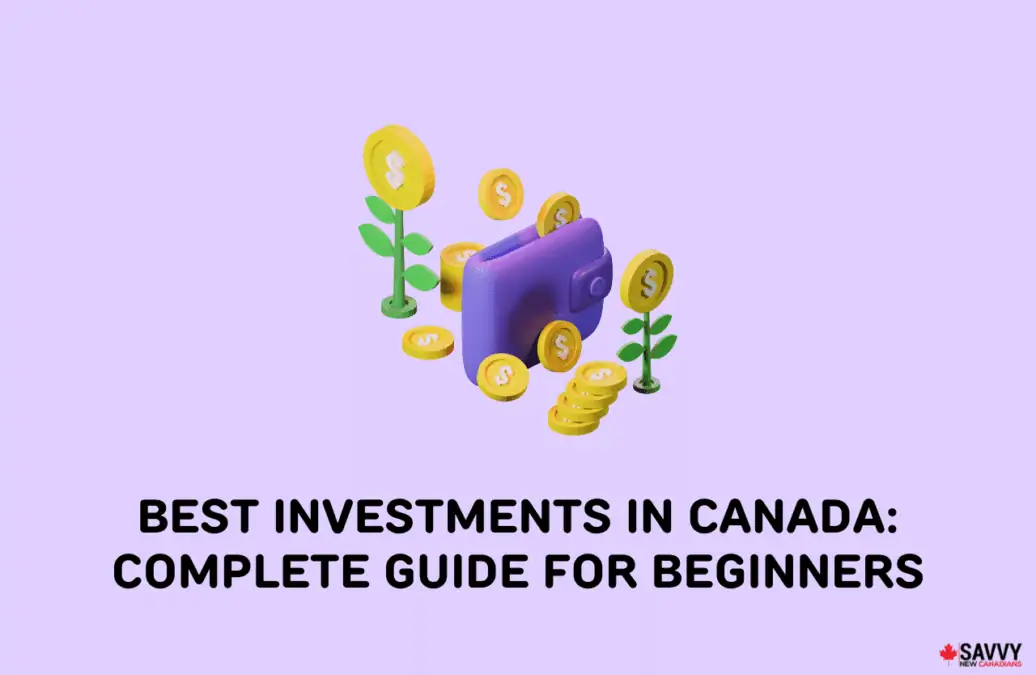
How to Invest in Canada in 2024
You can buy and sell investment products in Canada using a traditional brokerage, discount broker, robo-advisor, or crypto exchange.
Traditional Brokerages
In Canada, a traditional brokerage is typically one of the major banks. These brokerage accounts certainly have their benefits which include integration with banking, full investing tools, and full customer support.
Of course, the downside of investing with big banks is the high trading fees we have to incur.
Discount Brokerages
Discount brokerages have gained popularity in recent years because of their low-cost online platforms.
Sites like Wealthsimple offer trading accounts for stocks with zero-commission fees. Saving on these fees can help your gains in the long run!
Wealthsimple Trade

Trade stocks, ETFs, and options
Excellent trading platform for beginners
Deposit $150+ to get a $25 cash bonus
Transfer fees waived up to $150
Questrade
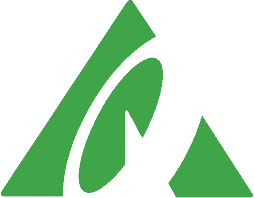
Trade stocks, ETFs, options, FX, bonds, CFDs, mutual funds, etc.
Get $50 trade credit with $1,000 funding
Low and competitive trading fees
No quarterly inactivity fees
Access to advanced tools and trading data
Top platform for advanced traders
Transfer fees waived
Qtrade

Up to $150 sign-up bonus
Trade stocks, ETFs, options, bonds, etc.
Excellent platform for newbies and seasoned investors
Competitive trading fees
Excellent customer service
Robo-Advisors
Robo-advisors are portfolios that are run by brokerages that can help you automatically allocate your funds to your own preferences.
These are built on complex algorithms that provide automated financial guidance without the intervention of human bias.
Robo-advisors generally charge lower fees compared to mutual funds.
Questwealth

Professionally managed ETF portfolios
Multiple accounts & low fees
Auto rebalancing and div reinvesting
Invest $10K free in 1st year
Wealthsimple Invest

Professionally managed ETF portfolios
Multiple account types
Auto rebalancing and div reinvesting
Get a $25 bonus with a $500 deposit
Crypto Exchanges
Finally, crypto exchanges offer you the ability to invest exclusively in cryptocurrencies. There are many Canadian exchanges you can use, like CoinSmart.
CoinSmart Crypto Exchange (now Bitbuy)
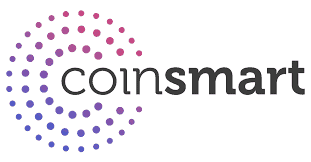
Top crypto exchange in Canada (now Bitbuy)
Great for new & advanced traders
Competitive trading fees
Get a $50 bonus when you deposit $250
Types of Investment Accounts
For Canadian investors, there are plenty of different investment accounts that you can use to grow your wealth. These can be either registered or non-registered, with different tax implications on withdrawals and capital gains.
Non-Registered Investment Account
This is your standard, traditional brokerage account. In this account, you can buy stocks, ETFs, mutual funds, and bonds, just to name a few assets.
A non-registered account has no trading limits, but you will pay taxes on all capital gains or losses incurred.
Tax-Free Savings Account or TFSA
Introduced in 2009 by the Canadian government, the TFSA allows Canadians to contribute a set amount to their savings or investments each year. The dollar limit for 2022 is $6,000.
Any capital gains, interest, or dividends made in this account are non-taxable. It is similar to the ROTH-IRA account in the United States.
Registered Retirement Savings Plan or RRSP
The RRSP has long been a staple for Canadian investors. This registered account allows your contributions to be deducted from your total income for the year.
You are only taxed on this account when you withdraw, typically in retirement. In the RRSP, you can invest in most investment assets, and it is an excellent account for saving for retirement.
Registered Education Savings Plan or RESP
RESPs are accounts that parents can set up to save or invest in their child’s future education.
Capital gains, dividends, and interest income earned in this account are not taxed until the child starts post-secondary and makes withdrawals. At this time, they will pay little to no taxes based on their marginal tax rate.
The Canadian Government matches contributions to a certain amount, and you can also apply for further grants.
How to Choose the Best Investments in Canada
When first starting out, investing money in Canada can be intimidating for beginners as there are many investment products, account types, and brokerages to choose from.
Before you invest your hard-earned money, you should establish your risk profile, investment horizon, savings plan, the amount you can initially invest, what your expected returns are, and how much time you can devote to investing.
Investing in Canada is a great way to plan for your retirement income. It can also help you and your family achieve financial stability for years or even decades to come!
FAQs
In Canada, this is probably real estate. Some of the best real estate investments in Canada can provide monthly rental income to pay off your mortgage. You just might not see high returns until you ultimately sell the property!
Any of the investment types covered above can provide you with the opportunity to grow your money. It can be as complicated as a stock portfolio or as simple as a high-interest savings account.
As a beginner, investing in assets like ETFs through a robo-advisor can help give you the experience you need to learn about the stock markets. You can also buy mutual bonds from your bank or open a commission-free brokerage account and trade stocks and ETFs.
There are plenty of good Canadian stocks to invest in. Blue-chip stocks like banks or energy companies can provide great dividends. If you want growth, check out tech companies.
If you haven’t already, you could start by investing using a TFSA. Allocate your portfolio to several stocks or use an index ETF that provides a basket of different companies.
An investment of $10,000 can provide a great head start in any of the assets mentioned. If you can fit that into your RRSP, you could see a significant reduction in your total income and a refund come tax season!
Luckily for Canadian investors, big Canadian banks are great investments. They all offer high dividend yields and stable performance.
When you get to $20,000, you can make some great investments. In some areas, this can be a downpayment on a property. It can also be placed into a high-dividend ETF that can be one of the best passive investments in Canada.
The best short-term investment in Canada can be as simple as buying short-term bonds or as grand as flipping real estate properties.
One of the best long-term investments in Canada is investing in the stock market. Over time, stocks and ETFs provide some of the best returns for growing wealth.
